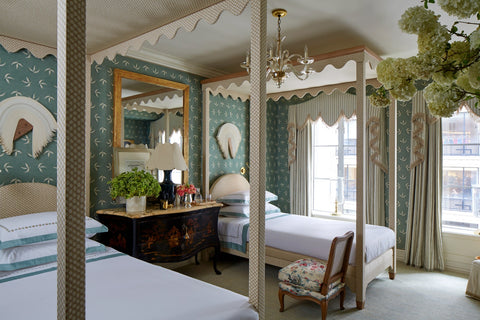Using vivid fabrics in Home Décor- Festive Edition
How to use Fabrics to style your Homes
Fabric, one can say, might be the most underrated element in Home Decor since one normally tends to think of furniture, lighting, etc. Fabric is in fact, one of the core elements of interior design.
Fabric adds colours to the interior, whether home or office. The colours can vary according to the place – bright, warm colours for homes and dark, subtle hues for offices. Fabric colour should be chosen in accordance with the furniture, since the blend of those two adds to the overall effect the theme of the interior suggests. Normally offices go for plain, solid coloured fabrics whereas one can expect fabrics of different patterns and designs for homes. The designs can vary from traditional, embroidery, cross-stitch, etc.

The fabric selection can affect the overall aesthetics of your décor. If you have started looking for fabrics at stores, you might find that the choices can be overwhelming. That’s why we are here to help.
What are the different fabrics used in home interiors?
Let us begin by looking at the commonly used fabrics in home interior decoration:
- Silk– Silk is a classy fabric option. It is soft and flowy. You may find silk used in bed linen, curtains and upholstery. However, it is very delicate and wrinkles quickly. It can also get stained easily, and requires a lot of care.
- Rayon – In terms of texture, rayon is similar to silk. It is smooth and soft, but it is sturdier than silk. It is also commonly used in curtains and upholstery.
- Cotton – We can’t leave cotton out of a list of fabrics, can we? Cotton is an inexpensive, easy-to-obtain fabric that can be used for bed linens, upholstery, curtains, etc. It is quite versatile, but is labelled as less elegant-looking than silk. Cotton blends are more commonly used for interiors as pure cotton may not be sturdy enough.

- Polyester– This is a very sturdy material that is often used for interior decoration. Polyester is easy to use, long-lasting and resistant to stains.
- Nylon– Nylon is also sturdy and durable. It is very commonly used for upholstery and curtain work.
- Wool– Like silk, wool is a fabulous-looking material that adds grace and class to a home. You can get beautiful woollen rugs, that not only feel soft but also look like a million dollars.
- Velvet– A few seasons back, this material was considered unfashionable. But now, velvet is a hot trend. Jump on the bandwagon by getting yourself velvet sheets, curtains, carpets, sofa covers or any other kind of home decor.
How to Choose the Right Fabric?
The chances are that you can’t just decide on one kind of fabric and use it for your entire house. You need to consider your requirements for each room. Keep in mind the mood you want to create, as well. Look through the options available one can get an appropriate fabric. For instance, if you share your bedroom with a romantic partner, bed linen in soft silk would be the right choice. Team it with a cosy woollen rug on the floor for an intimate, romantic look. If you have pets or small kids at home, avoid using expensive fabric that gets stained or torn easily.
Things to Remember Before You Buy a Fabric
Here are a few other factors you need to consider before making your fabric purchase:
- Fabric colour combination– Finding the perfect colour combination for each room is crucial to create the mood you want. While doing the decor of a home, the fabric is usually bought at the end; after the walls are painted and the furniture is decided upon. However, ideally, the colours for the entire room should be chosen first. This includes the walls, furniture, upholstery and curtains. This way, you can make sure that you pick out colours that go well together, creating a sense of harmony.

- Fabric Textures– Including too many colours in a room can make it look chaotic. However, you can play around with the textures and patterns. If you have plain walls, it will be easier to add patterned curtains. However, if you have an eye for design, you can mix and match wallpapers, curtains and upholstery. which have different patterns and textures. Combine geometric prints, floral prints and other designs to get a unique look.
- Price– Last but not least, choose fabrics that fit your budget. If you have a limited budget, stick to cotton, nylon and polyester. If you can spend a little more and want a more luxurious look, opt for silks and wool. Thankfully, there are so many fabric options available that you can surely find some stunning ones no matter what your budget is.
How to use textiles
Now that you know what textiles are and why they’re so important to your design, the next step is to learn how to use them correctly. Below is a list of tips to help get you started.
Use them as inspiration
Textiles may seem like accessories or the last design elements to purchase but they’re actually the opposite. They can serve as the inspiration for the space, providing a color palette upon which to build the room. When you’re not sure where to start with a room, turn to a rug, accent chair or even a throw pillow to give you a sense of direction.

Mix patterns, not colors
Once you have your color palette in place, stick to it. Using too many colors in a room can make it feel hectic and confusing. That said, it doesn’t mean your room has to be boring. You can still add plenty of visual interest to the space by combining patterns Make an effort to use multiple patterns — and solids — that fall within the same palette.
Layer textures
Another way to add visual interest to the space is by using textiles that come in a variety of textures. Remember, in this case, texture refers to the way in which the fabric looks like it feels. Try mixing and matching different textures throughout the room or even layering them together in order to create a sense of contrast. Let us know what textiles inspire you and how you incorporate them into your designs.
We at www.designcart.com have the best quality and super affordable fabrics sorting all your requirements!
In our next blog we tell you how to put these concepts and actually use the. Stay Tuned!






